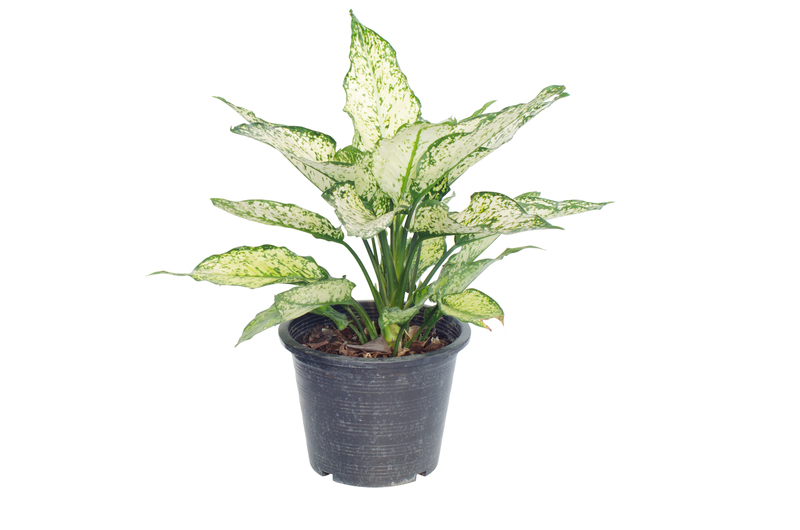Mastering the Art of Managing Garden Wind
Posted on 24/09/2025
Mastering the Art of Managing Garden Wind: An Essential Guide
Wind can be both a blessing and a challenge in the garden. While a light breeze keeps air flowing and discourages plant diseases, strong winds can damage plants, dry out soil, and turn gardening into an uphill battle. If you're a passionate gardener looking to master the art of managing garden wind, you've come to the right place. This comprehensive guide will equip you with all the knowledge and expert tips needed to create a beautiful, resilient, and productive garden, no matter how the wind blows.

Understanding Wind in the Garden
Before learning how to mitigate wind issues, it's crucial to understand how wind affects your garden:
- Evaporation: Strong winds increase evaporation, drawing moisture from the soil and plant leaves, leaving plants dehydrated.
- Physical Damage: Winds can break stems, snap branches, and uproot delicate plants, especially during storms or in exposed sites.
- Pest and Disease Spread: Wind can carry pests or pathogens from plant to plant, increasing the risk of infestation or infection.
- Pollination: For some crops, wind is helpful--it aids in pollination, especially for wind-pollinated plants like corn and grasses.
Managing wind in the garden requires understanding its sources and impact.
Sources of Wind in Gardens
- Geographical Location: Open fields and coastal properties tend to experience higher wind exposure than sheltered, urban settings.
- Seasonal Patterns: Certain times of year, especially spring and fall, bring stronger winds.
- Microclimates: Buildings, walls, and existing vegetation can channel or block wind, creating protected or exposed microclimates in your yard.
Assessing Your Garden's Wind Situation
Before implementing solutions, assess your unique garden wind conditions:
- Observe Wind Direction: Use a weather vane or simple ribbons tied to stakes to monitor prevailing wind directions during different seasons.
- Note Intensity and Patterns: Track how strong the wind tends to be, and where it's most intense in your garden.
- Identify Trouble Spots: Look for areas where plants are most affected--wilting, breakage, or dryness are telltale signs.
Tip: Spend a few weeks recording wind patterns. This information is invaluable when planning effective wind management strategies.
Strategies for Mastering Garden Wind Management
Now let's dive into proven methods for mastering wind in gardens:
1. Creating Effective Windbreaks
The single most effective way to manage wind in the garden is to install a windbreak. Windbreaks act as barriers that slow wind speed, filter its force, and protect your valuable plants. There are natural and artificial windbreak options:
Plant-Based Windbreaks
- Hedges: Shrubs or small trees planted close together form dense hedges. Great choices include privet, boxwood, hawthorn, or yew.
- Tree Rows: Staggered rows of trees like pine, spruce, cedar, or poplar create broad shelter and enhance landscape beauty.
- Bamboo Screens: Fargesia and clumping bamboos are fast-growing windbreaks that also provide privacy.
Tip: For year-round protection, choose evergreen species. Deciduous trees and shrubs lose leaves in winter, reducing their effectiveness.
Artificial Windbreaks
- Fences: Semi-solid fences (with gaps for wind to pass through) are most effective. Slatted wood, trellis, or mesh fencing slow the wind instead of creating damaging turbulence.
- Garden Screens: Temporary or movable options, using netting or fabric, can be placed as needed during windy spells.
Pro Strategy: Install windbreaks at right angles to prevailing winds, and ideally, start them 1-2 garden beds "upwind" of your key planting zones.
2. Proper Plant Placement and Garden Design
Smart layout is essential for mastering garden wind:
- Place Sensitive Plants Strategically: Plant delicate vegetables or flowers on the leeward side (sheltered side) of fences, hedges, or taller plants.
- Stagger Plantings: Avoid straight lines; a staggered arrangement "breaks up" gusts, reducing velocity.
- Use Companion Planting: Tall, sturdy crops (corn, sunflowers) can shield smaller, fragile plants.
- Create Microclimates: Use existing structures--walls, sheds, or greenhouses--to create sheltered pockets for wind-sensitive plants.
3. Mulching and Soil Protection
Wind rapidly dries out exposed garden soil, increasing evaporation. Combat this with heavy mulching:
- Organic Mulch: Straw, bark chips, compost, and shredded leaves help retain moisture and anchor the soil.
- Living Mulch: Low-growing ground covers (clover, creeping thyme) form a living carpet, shielding the soil from wind.
- Windbreak Fabric: Porous landscape fabric retains warmth and moisture while allowing water to pass through.
Extra Tip: Replenish mulch each season, especially after storms or strong winds, to maintain continuous soil protection.
4. Staking and Supporting Vulnerable Plants
Some plants are especially prone to wind damage, especially when young or tall. Here's how to shield them:
- Stakes and Ties: Use bamboo stakes, wooden rods, or metal supports. Gentle, soft ties prevent stem damage.
- Cages and Frames: Tomato cages, pea frames, or homemade structures help keep plants upright in blustery conditions.
- Regular Inspection: Check supports regularly; adjust ties as plants grow to avoid girdling and promote healthy development.
5. Watering Wisely in Windy Conditions
Evaporation rates soar during windy days. Protect your plants with these watering strategies:
- Water Early or Late: Water in the early morning or evening when winds are calmer and evaporation is lower.
- Drip Irrigation: Direct water to roots with drip lines, soaker hoses, or bottles to reduce loss from wind and sun.
- Deep Watering: Water deeply and less frequently to encourage deep root systems, making plants more drought- and wind-resistant.
6. Selecting Wind-Tolerant Plants
Some plants are naturally more adaptable to windy sites. If you garden in consistently breezy areas, opt for these:
- Grasses: Ornamental grasses like miscanthus, switchgrass, and pampas thrive in wind and bend gracefully without breaking.
- Coastal Shrubs: Plants like oleander, escallonia, and sea buckthorn are made for harsh, exposed environments.
- Native Flora: Local native species have evolved to cope with your region's wind conditions.
Note: Avoid planting large-leafed or brittle-stemmed species in highly exposed areas. They are most susceptible to wind damage.
Long-Term Solutions for Wind Management in Gardens
To truly master wind management over the years, combine short-term fixes with long-term garden planning:
- Layered Sheltering: Plant windbreaks in multiple rows: tall trees at the back (windward), mid-sized shrubs in the middle, hardy perennials at the front.
- Soil Improvement: Add organic matter to boost water retention, keeping soil cooler and less prone to wind-related drying.
- Continuous Adaptation: Prune windbreaks regularly for density, replant as needed, and adjust garden design as wind patterns or your plant selection changes over time.
Common Mistakes When Dealing with Garden Wind
Even experienced gardeners make wind management mistakes. Here are the top pitfalls to avoid:
- Installing Solid Barriers: Solid walls or fences increase turbulence, creating damaging "eddy" currents on the leeward side. Use partial screens instead.
- Neglecting to Water in Wind: Windy days dry out plants faster; skipping watering can result in stress or failure.
- Overcrowding Windbreaks: Planting windbreak species too close together can stunt growth and reduce effectiveness. Allow for mature spacing.
- Underestimating Growth Time: Natural windbreaks take 3-7 years to reach full size, so supplement with temporary screens initially.
Innovative Modern Tools for Garden Wind Management
Technology offers additional help in managing breezy gardens:
- Wind Sensors: Weather stations with wind speed and direction sensors help you understand garden wind, remotely or via smartphone apps.
- Smart Irrigation: Some drip or sprinkler systems adjust output based on wind conditions to minimize water waste.
- Windbreak Mesh Solutions: UV-resistant netting or "Windmesh" can reduce wind velocity by up to 70% and is perfect for vegetable patches or young trees.
Bonus: Creative Garden Design Aesthetics & Wind
Mastering wind doesn't just protect your plants--it can enhance your garden's beauty and utility:
- Decorative Windbreaks: Choose colorful flowering hedges or layered plantings that blossom at different times.
- Wind Chimes and Flags: Turn wind into a feature with attractive ornaments that respond to breezes.
- Wildlife Habitat: Dense windbreaks shelter birds and beneficial insects, boosting garden biodiversity.
Design Tip: Pathways and garden "rooms" can be oriented to take advantage of sheltered, wind-free spaces for entertaining and relaxing.

Frequently Asked Questions About Managing Garden Wind
Q: How close should I plant windbreaks to my garden beds?
A: For best protection, position windbreaks 5-7 times their mature height upwind from the area you want to shield. If this isn't possible, place them as close as space allows while allowing sun to reach your plants.
Q: Do windbreaks block sunlight?
A: If you use dense, tall windbreaks, they may shade your garden in the morning or afternoon. Consider using "louvered" or staggered plants, or choosing lower-growing species on southern-facing barriers.
Q: What's the best fast-growing windbreak plant?
A: Bamboo and willow grow very quickly, as do poplars and Leyland cypress. Always select varieties that suit your climate and soil conditions.
Conclusion: Mastering Garden Wind is a Gardener's Secret Weapon
Managing wind in the garden isn't just about damage control--it's about embracing nature's dynamics to create a vibrant, hardy oasis. By understanding wind's effects, assessing your unique conditions, and applying the right mix of windbreaks, smart layout, soil care, and technology, you can master the art of garden wind management for lush, thriving plant life year after year.
Turn every breeze into an advantage--transform your garden into a resilient, wind-smart paradise!



